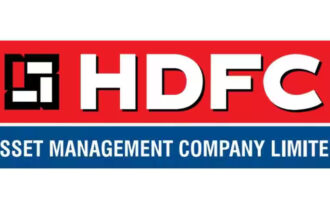HDFC Asset Management Company (AMC) released its Q3FY25 results, highlighting growth in revenue, assets under management (AUM), and investor base. However, some challenges affected its profitability during the quarter.
Net revenue grew by 39% YoY and 5% QoQ. This growth was driven by a 45% YoY increase in systematic transactions and a 38% growth in SIP AUM, which reached ₹1,77,700 crore. The rise in SIP AUM suggests that retail investors continue to view SIPs as a stable investment avenue, which benefits HDFC AMC as a leading player in this segment.
The company’s total AUM reached ₹7,87,400 crore, reflecting a 43% YoY growth, outperforming the industry’s 39% growth during the same period. This indicates that HDFC AMC is gaining traction in the market, supported by its expanding product mix and efficient distribution network. Actively managed equity AUM, which grew by 51% YoY in line with the industry, now constitutes 63% of HDFC AMC’s total AUM, compared to 59% in Q3FY24. The shift in the AUM mix towards equity is notable, as equity products typically generate higher fees than other asset classes, boosting profitability.
Market share improvements further underline the company’s growth strategy. The overall market share rose to 11.5% in Q3FY25 from 11.2% a year earlier. In equity AUM, market share increased from 12.6% to 12.8%, reflecting the company’s ability to attract new investors and retain existing ones. The rise in unique investors by 45% YoY also supports this trend, with the market share of unique investors increasing to 24% from 21% in Q3FY’24.
A notable shift was observed in the contribution of direct funds, which increased to 41.4% of the total asset sourcing mix in Q3FY25, up from 38.8% in Q3FY24. In the equity segment, direct funds now contribute 27%, compared to 24% a year ago. This trend indicates a preference among investors for lower-cost investment options, which are facilitated by direct fund routes. This shift benefits HDFC AMC in the long term by reducing dependency on intermediaries and enhancing client relationships.
Despite these growth indicators, profitability was impacted. EBITDA grew by 50% YoY, and margins expanded due to the increasing share of actively managed equity AUM. However, net profit grew by 31%, with a decline in net profit margins by 4 percentage points. This decline was attributed to a 35% fall in other income caused by mark-to-market (MTM) losses. Fees and commission expenses rose sharply by 175% YoY, indicating increased spending on distribution and marketing, which may reflect efforts to maintain market share amid rising competition.
The analysis of the results shows that HDFC AMC is improving its strengths in the SIP and equity segments to outperform the industry in terms of AUM growth. However, challenges such as falling other income and rising costs highlight areas where efficiency improvements are needed.

